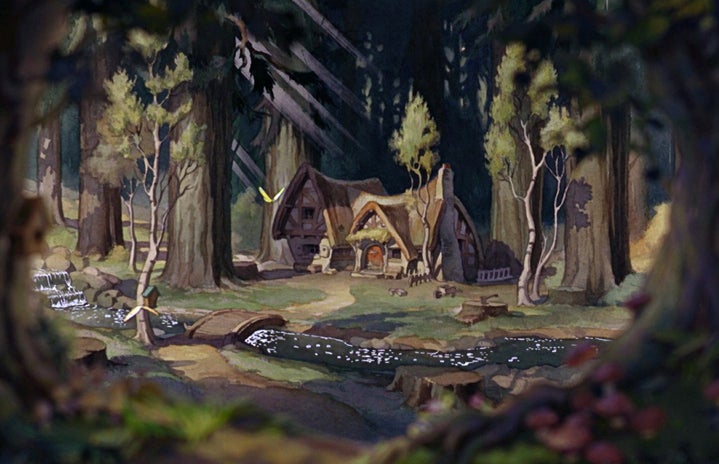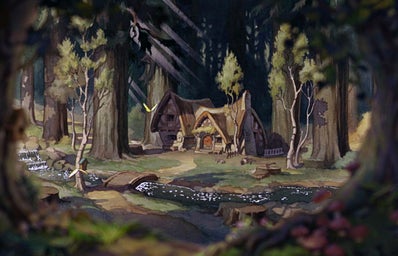There’s a lot of talk nowadays that female characters in fairytale and folklore stories are poor examples of feminism. While there is plenty of toxic masculinity and sexism in the fairytale genre, but there are a few really incredible examples of strong female characters in some stories. Something to keep in mind is that fairytales are largely reconstructed by every author that rewrites the story, so this presents an opportunity for our favorite characters to become more modern. Some of the first characters I fell in love with were brave and clever princesses, and I still believe that they can be considered positive examples of feminism.
Green Snake by Madame d’Aulnoy
This French fairytale is one of my favorites, mainly because it doesn’t follow the traditional plot you’d expect. The main character is a princess named Laidronette, but she’s not traditionally beautiful. She’s incredibly clever, but her kingdom only values traditional beauty, so Laidronette lives a pretty unhappy life. It’s not until she meets a king cursed to be a frightening snake that her life starts getting really exciting. Not only does this story question traditional beauty standards, but instead of the usual trope of a prince having to prove his love for a princess, the princess gets the chance to fight for the freedom of the man she loves. Having always been a nerd myself, reading this story about a princess who was clever instead of beautiful was very inspiring to me.

The Snow Queen by Hans Christian Andersen
While this story is now better known from the Frozen (2013) adaptation, the original story is much darker. While Elsa isn’t the villain in the Disney adaptation, in the original Danish story, the Snow Queen has no name but her evil knows no bounds. She tricks and kidnaps a young boy named Kai from his village, and Kai almost turns evil himself. Luckily for Kai, he has an awesome best friend named Gerda who moves heaven and Earth to get him back. Gerda is a young girl who ventures far from home, braving the elements, all to save her best friend. Most readers are put off from the story due to the unusual cruelty of the villain, but all the characters are highly developed for such a short story.

Costanza/Costanzo by Giovanni Straparola
I came across this story pretty recently, and I want to recommend it to anyone and everyone. If you’re going to read this story, I highly recommend listening to Jason Weiser’s reading of it because he does a phenomenal job making the old story seem like a casual conversation between friends. In this Italian folktale, a princess named Costanza leaves her family’s kingdom to seek her own fortune. What I love about this story is how industrious and self-sufficient the princess is! Her father is embarrassed to tell her that he didn’t expect to have a fourth daughter so late in life, so he has no dowry for her. Instead of berating her father, the princess goes off in the world to make her own way. If you love the Mulan story, as well as Twelfth Night by Shakespeare, there are some similar elements in this folktale.
Bright, Deardeer, and Kit/The Story of Blondine, Bonne-Biche, and Beau-Minon by Madame la Comtesse de Segur
This was one of the first stories I ever read and enjoyed, and I’m disappointed that there aren’t more interpretations written nowadays! I definitely need to read a young adult novel inspired by this fairytale! The beginning of the French story starts off with major Snow White vibes as a princess named Bright is banished by her evil stepmother. Bright becomes friends with a magical deer and cat with who she goes on adventures. What makes this fairytale so memorable for me is that Bright isn’t a perfect, stereotypical princess. Bright is young, and she makes mistakes, not realizing their consequences. However, she is given the opportunity to learn from her mistakes. This is one of the few fairytales that, despite all the magic involved, actually teach real-life lessons.

The Wild Swans by Hans Christian Andersen
This underrated story appeals deeply to my identity as an introvert. Even before I knew what an introvert was, I was touched by this fairytale about a girl who voluntarily chooses to not speak to a single soul for seven years. This Danish fairytale is about a princess named Elisa who is close with her brothers. However, when the kids get a new stepmother, she is jealous of the boys and curses them to live as swans. The story then focuses on Elisa’s efforts to free her brothers from their curse. Elisa is selfless, brave, and strong, traits that should be instilled in not only young girls but boys as well. To me, this story is a great example of familial and platonic love and how powerful it can be. Although Elisa is forced into marriage with a king, this fairytale doesn’t suddenly become a love story. Instead, Elisa doesn’t let her relationship with the king get in the way of her mission to rescue her brothers.





